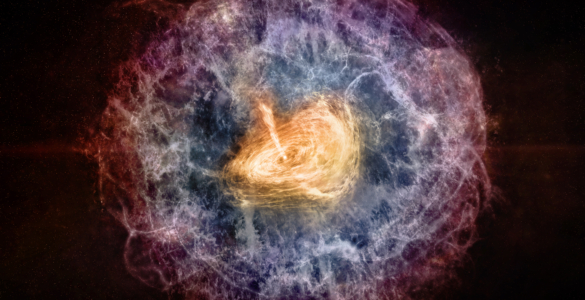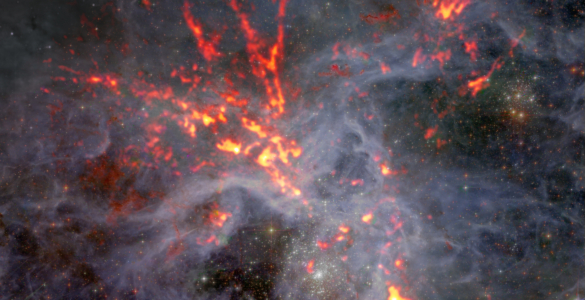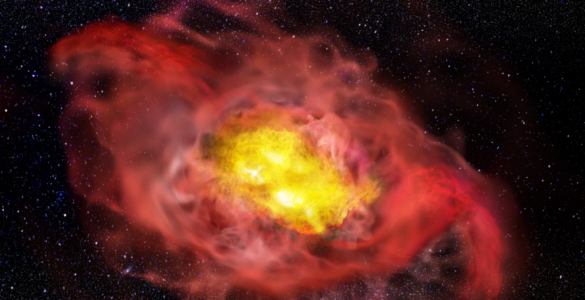Latest NRAO News
News is managed by NRAO News & Public Information. Questions about News? Have a story to share? Want to interview a scientist or create new media about our telescopes?

Six NAC alums have accepted offers from outstanding graduate programs around the country. Each will receive a $5,000 AUI Board of Trustees NAC Bridge Scholarship Award, with AUI and NRAO’s congratulations and best wishes for a smooth start to an exciting new chapter of their lives.

Astronomers using data from the VLA Sky Survey have discovered one of the youngest known neutron stars — possibly as young as only 14 years. The dense remnant of a supernova explosion was revealed when bright radio emission powered by the pulsar’s powerful magnetic field emerged from behind a thick shell of debris from the explosion.

While using the Atacama Large Millimeter/submillimeter Array (ALMA) to observe large star-forming regions in the Large Magellanic Cloud (LMC), scientists discovered a turbulent push-and-pull dynamic in the star-forming region, 30 Doradus. Observations revealed that despite intense stellar feedback, gravity is shaping the molecular cloud, and against scientific odds, is driving the ongoing formation of young, massive stars.

Scientists using the Atacama Large Millimeter/submillimeter Array (ALMA)— an international observatory co-operated by the US National Science Foundation’s National Radio Astronomy Observatory (NRAO)—have observed a significant amount of cold, neutral gas in the outer regions of the young galaxy A1689-zD1, as well as outflows of hot gas coming from the galaxy’s center. These results may shed light on a critical stage of galactic evolution for early galaxies, where young galaxies begin the transformation to be increasingly like their later, more structured cousins.

Using the Atacama Large Millimeter/submillimeter Array (ALMA), astronomers have imaged the debris disk of the nearby star HD 53143 at millimeter wavelengths for the first time, and it looks nothing like they expected. Based on early coronagraphic data, scientists expected ALMA to confirm the debris disk as a face-on ring peppered with clumps of dust. Instead, the observations took a surprise turn, revealing the most complicated and eccentric debris disk observed to date.

Seven new scientific results from the Atacama Large Millimeter/submillimeter Array (ALMA), the Very Large Array (VLA), and the Very Large Array Sky Survey (VLASS) will be revealed at multiple press conferences during the 240th meeting of the American Astronomical Society (AAS) between June 13-15, 2022 in Pasadena, California.





